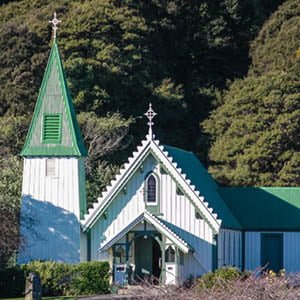Church Buildings – Bigger Barns?
The early Christian church did not build dedicated church buildings. They typically met in people’s homes or in public spaces, such as the temple forecourt. They often met in synagogues, because of their close connections with the Jews. The earliest known Christian church (second century), the Dura-Europos church in Syria was essentially a house church.
Dedicated Church buildings became more elaborate during the reign of Constantine in the fourth century. During the next 1000 or more years, churches became larger and, together with the palaces of kings and rulers, dominated the architectural landscape in Europe. Many of these buildings took more than a century to complete and quite a few of them are still standing today. Smaller village churches were built and in Europe you can find many examples of these solidly-built little churches. Not only did the churches set the lead for architecture, their design set the style for church liturgy – something that still influences us today.
the fourth century. During the next 1000 or more years, churches became larger and, together with the palaces of kings and rulers, dominated the architectural landscape in Europe. Many of these buildings took more than a century to complete and quite a few of them are still standing today. Smaller village churches were built and in Europe you can find many examples of these solidly-built little churches. Not only did the churches set the lead for architecture, their design set the style for church liturgy – something that still influences us today.
We live in a post Christian era now and while many of the great Cathedrals remain, the number of worshipers is often diminutive. I have been to St Peter’s Basilica in Rome on a Sunday, only to find the doors open and tourists streaming through, not to worship, but to admire the works of art and the architecture. The practical evidence of Christian worship was hard to find. I saw an aging nun praying in one of the side chapels and that was about the sum total of worship that I experienced in one of the most significant Christian church buildings in the world.
In our modern world, the church scene is more complex. We are still building large expensive churches, arguably to the glory of God but probably more often than not to demonstrate the church is successful. In Australia, in my travels I pass though many towns and cities where church buildings are often closed or converted for a different purpose. They lie empty and disused. Some of the prettier ones are used on a commercial basis for weddings but that is about all.
This series of lessons on stewardship has led me to rethink our places of worship for Seventh-day Adventists. Often our churches are built as dedicated worship buildings, essentially used for a few hours of worship on Sabbath, and closed for the rest of the week. It is an enormously inefficient use of a building. If you were to go to most Seventh-day Adventist churches during the week you would find them closed.
In thinking about this issue, I thought back to the idea of the Jewish synagogue. Synagogues were not churches in the sense that they are dedicated places of worship, but rather community centers or hubs, where the community would meet any day of the week. Many of them were part of a house. Some of them ran schools. They functioned as libraries. In a time when the ownership of books or scrolls was beyond the means of individuals, the synagogue was the only place where people could read the written word, and indeed, learn to read.
I like the idea of the place of worship being a community hub, a place where the community can meet together for a wide variety of activities, any day of the week. Two modern examples:
I visited a Seventh-day Adventist church in the United States a few years ago, that was used on Sabbath as a church and by the rest of the community during the rest of the week. It bothered me at first to see Basketball rings on both sides of the church and to learn that the church was used by the local basketball teams for practice and competition during the rest of the week. On reflection though, I realised that the Church was making a valuable contribution to the local community.
I am involved in the U3A movement here in Australia. U3A is a world-wide initiative to provide opportunities for older people to be physically and mentally active. It is a secular organisation, but because there are several Seventh-day Adventist Churches in my local area, many of the U3A groups use our church facilities for their activities. It is commendable to see Seventh-day Adventist buildings contributing to the local community in a positive way
Both these examples provide opportunities for community involvement and demonstrate good corporate stewardship. It reminds us that the church is not really about buildings and appearance but about people and relationships.
Here is the challenge we face as a church: I read the parable about the farmer who decided to pull down his barns and build greater ones – you all know what happened – and I ask myself the question; Are we doing the same thing with our churches and institutions?
Are we still of the mindset that we should build bigger, more expensive church buildings where we can worship for a few hours each week, or should be seek a community approach, sharing resources, establishing friendships and building relationships?
 (66)
(66)